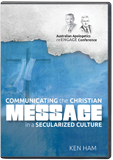
Queen Elizabeth II: Britain’s Longest-Reigning Monarch’s Legacy of Faith
Long to reign over us: Queen Elizabeth II (1926–2022), honoring her Savior in life and death
We do not normally allow our children to watch twelve hours of TV in a day, but Monday, September 19, 2022, was no ordinary home-educating day. Instead of hitting the books, we sat down with around four billion other viewers across the globe to watch history unfold in front of our eyes. It was the day of the state funeral for Her Majesty Queen Elizabeth II, the longest-reigning monarch in British history (1952–2022).1 This was indeed a historic day as it marked the end of the second Elizabethan age.2
At the death of Her Majesty Queen Elizabeth II, a ten-day period of national mourning was declared for the people of the United Kingdom (UK). A national holiday was also declared for the day of her funeral. As part of the national mourning, Queen Elizabeth II lay in state in Edinburgh (St. Giles Cathedral) and London (Palace of Westminster). Hundreds of thousands of people filed past her coffin to pay their respects. The nation paid a final farewell to Queen Elizabeth II with a state funeral (typically reserved for kings and queens) that followed strict rules of protocol, such as a military procession.
Honor Where Honor Is Due
Queen Elizabeth’s reign was marked by a strong sense of duty and determination to dedicate her life to her throne and her people. For many of the people of the UK, she is the only queen we have ever known and the last link to those who understood uncomplaining duty and commitment. On her twenty-first birthday, she made a pledge to her subjects that has become famous:
I declare before you all that my whole life whether it be long or short shall be devoted to your service and the service of our great imperial family to which we all belong.3
Indeed, she had shown a particular faithfulness in striving to keep this solemn promise to her subjects, even to the point of meeting with and appointing a new prime minister at the age of 96, just two days before she died. But the greater wonder is that she understood herself to be subject to one who sits on a far higher throne: the King of Kings, the Lord Jesus Christ (Ephesians 1:20–22).
Queen Elizabeth II’s life, from her coronation to her death, was a continual reference to the Savior, the Lord Jesus. The living God “removes kings and sets up kings” (Daniel 2:21), and our Queen was one of the few rulers in history who acknowledged the name of Jesus Christ and gave glory to him.
History
Princess Elizabeth Alexandra Mary was born in 1926 to the Duke of York and Lady Elizabeth Bowes Lyon and was never supposed to become queen. Her father, the Duke of York, was the younger brother of Edward VIII, a handsome king whom his people loved. A storm rocked the nation when Edward VIII formed a relationship with a divorcée named Wallis Simpson. At that time, the UK held much more strongly to its Christian roots, and casual divorce and remarriage were not as acceptable as they are today (Matthew 19:3–9). It was even more unthinkable for a king to marry a divorcée. To the nation’s shock, Edward VIII chose his relationship over his country and abdicated the throne (1936). The crown was given to his younger brother, George VI, and Princess Elizabeth became second in line to the throne. Years later, Edward VIII was exposed as a Nazi conspirator and traitor to his country.4 We praise God that he saw fit to remove a man who was so fundamentally unfit for kingship.
When George VI died (1952) suddenly at the age of fifty-six, Princess Elizabeth was twenty-five years old and on tour in Kenya with her husband, Prince Philip. She returned home to her country and duty, with no time to grieve, and was formally declared Queen. The three-hour coronation service, watched by millions of viewers, was an incredible testimony to the King of Kings. Consider some of the stunning, God-honoring words of this ancient ceremony.5 The then-Archbishop of Canterbury asked the Queen:
Will you to the utmost of your power maintain the Laws of God and the true profession of the Gospel?
Will you to the utmost of your power maintain in the United Kingdom the Protestant Reformed Religion established by law?
To which the Queen replied, “All this I promise to do.” Now, the imperial state crown which Queen Elizabeth received at this ceremony is truly priceless. It holds 2,868 diamonds, 17 sapphires, 11 emeralds, 269 pearls, and 4 rubies mounted in gold.6 Nevertheless, the coronation ceremony acknowledges and esteems that which has true and lasting value. The Moderator of the General Assembly of the Church of Scotland presented the Queen with a Bible with this explanation:
[W]e present you with this Book, the most valuable thing this world affords . . . . Here is wisdom; This is the royal Law; These are the lively Oracles of God.7
If every king, queen, prime minister, president, and ruler truly understood the all-surpassing and supreme value of the living Word of God (2 Timothy 3:16; Hebrews 4:12), our world would look very different from the one in which we currently live.
During her reign, the Queen exemplified grace and dignity. She weathered many storms, including her “annus horribilis” (horrible year) in 1992 when three of her children were divorced and Windsor Castle (the Queen’s official residence) suffered a great fire. Yet, in direct contrast to the publicity-seeking celebrities of this age, she never took to airing her grievances to the media. In 2012, she demonstrated tremendous forgiveness (Matthew 5:44) in shaking hands with Martin McGuiness, a former IRA commander.8 More striking still is when we realize that Lord Mountbatten, the uncle of her husband, the Duke of Edinburgh, was assassinated by the IRA on August 27, 1979.
When the Queen did speak in front of cameras at the traditional “Queen’s speech” on Christmas Day, she increasingly used those minutes to witness to our Savior. In 2000 she said, “For me the teachings of Christ and my own personal accountability before God provide a framework in which I try to lead my life.”9
In the 2014 Christmas broadcast, she said,
For me, the life of Jesus Christ, the Prince of Peace, whose birth we celebrate today, is an inspiration and an anchor in my life. A role model of reconciliation and forgiveness, he stretched out his hands in love, acceptance and healing. Christ’s example has taught me to seek to respect and value all people, of whatever faith or none.10
For the Word of God to be heard by four billion people in death is an outstanding legacy.
If in life, Queen Elizabeth II sought to glorify the King of Kings, then how much more so in death? As the media were at pains to communicate, the Queen was heavily involved in the planning of her own funeral service. She selected the songs, the readings, and even the order of the service. The Bible readings at the Queen’s funeral spoke of the uniqueness of Jesus as the only way to God the Father (John 14:1–9), that death came through Adam and the resurrection from the dead through Christ (1 Corinthians 15:21–26), and Christ’s final victory over death (1 Corinthians 15:53–58). For the Word of God to be heard by four billion people in death is an outstanding legacy.
In his sermon, the Archbishop of Canterbury reminded people of Her Majesty’s Christian faith:
Jesus—who in our reading does not tell his disciples how to follow, but who to follow—said: “I am the way, the truth and the life.” Her Late Majesty’s example was not set through her position or her ambition, but through whom she followed . . .11
Only One Perfect and Eternal Throne
So now we have a new king: King Charles III. Sadly, he does not appear to show the same faith as his mother. He has never publicly repented for the very public adulterous relationship he pursued during his marriage to Princess Diana. Nevertheless, as Scripture commands, we pray for him (1 Timothy 2:1–2). Surely, he has received some teaching about Christ from his mother. Perhaps he stands in a long line of prodigals and may one day turn in repentance and faith to the Father (Luke 15:11–32). Indeed, the national anthem of the UK is an intercessory prayer that God will save our King.
Her Majesty Queen Elizabeth II was not a perfect monarch. There were aspects of her funeral and her life that were disappointing, and her children do not appear to have the same reverence for Christ that she so obviously held. Nevertheless, her mistakes have been far fewer than the multitude of rulers the nations of this earth have known. As a nation, the UK has not deserved a godly Queen. We have abandoned and forsaken God. We have rejected his Word and forgotten to teach our children his law. Nevertheless, in his perfect wisdom, God saw fit—for a time at least—to appoint a Sovereign Queen who glorified him.
So be it, Lord! Thy throne shall never,
like earth’s proud empires, pass away;
thy kingdom stands, and grows forever,
till all thy creatures own thy sway.(The final verse of the hymn, “The Day Thou Gavest, Lord, Is Ended,” chosen by the Queen and sung at her funeral.)
Footnotes
- Her Majesty Queen Elizabeth II passed away peacefully on September 8, 2022, at the age of 96 at Balmoral Castle in Aberdeenshire, Scotland, a residence of the British royal family.
- The first Elizabethan age is the epoch in the Tudor period of the history of England during the reign of Queen Elizabeth I (1558–1603).
- “A Speech by the Queen on Her 21st Birthday, 1947,” Queen Elizabeth, The Royal Family, accessed October 14, 2022, https://www.royal.uk/21st-birthday-speech-21-april-1947.
- Andrew Lownie, Traitor King: The Scandalous Exile of the Duke & Duchess of Windsor (New York: Pegasus Books, 2022).
- “IV. The Oath,” The Form and Order of Service, an Anglican Liturgical Library, accessed October 14, 2022, http://www.oremus.org/liturgy/coronation/cor1953b.html.
- Historic Royal Places, “The Crown Jewels,” < a href="https://www.hrp.org.uk/tower-of-london/history-and-stories/the-crown-jewels/#gs.e4w1mo">https://www.hrp.org.uk/tower-of-london/history-and-stories/the-crown-jewels/#gs.e4w1mo.
- The Form and Order of Service, “V. The Presenting of the Holy Bible.”
- Deborah McAleese, “Historic moment Martin McGuinness shook hands with Queen Elizabeth,” The Irish News, March 21, 2017, https://www.irishnews.com/news/northernirelandnews/2017/03/21/news/historic-moment-martin-mcguinness-shook-hands-with-queen-elizabeth-971302/.
- Giovanna Albanese, “Billy Graham Chaplains See Decisions for Christ During The Queen’s Funeral,” September 20, 2022, https://billygraham.org/story/billy-graham-chaplains-see-decisions-for-christ-during-the-queens-funeral/.
- Jon Kuhrt, “The Queen’s Christmas message: a model of how to talk about faith in the public sphere,” December 28, 2014, https://gracetruth.blog/2014/12/28/the-queens-christmas-message-a-model-of-how-to-talk-about-faith-in-the-public-sphere/.
- “Queen speaks of spiritual accountability,” December 25, 2000, https://www.theguardian.com/uk/2000/dec/25/monarchy1.
Recommended Resources

Answers in Genesis is an apologetics ministry, dedicated to helping Christians defend their faith and proclaim the good news of Jesus Christ.
- Customer Service 800.778.3390
- © 2024 Answers in Genesis





